How to set up your coffee grinder and how to keep it clean and performing at its best.
We have literally made it our business to discover the best coffee beans and to roast them to produce the best possible flavour. You, of course, have also made it your business to ensure that every cup of coffee you make tastes perfect. We all know, though, that the perfect cup of coffee only comes from being confident in every person, process and piece of equipment involved.
The glamorous, intricate espresso machine earns a lot of deserved care and attention, as does the noisy, clamorous steam wand, and you have to use just the right jugs, the best milk and most stylish cups. What often gets forgotten is the workhorse which labours constantly behind the scenes and without which there would never be great coffee: the grinder.
The grinder lies at the heart of making the best coffee and without setting it up correctly and keeping it clean and well maintained you will never make the quality of coffee which your beans, and you, deserve.
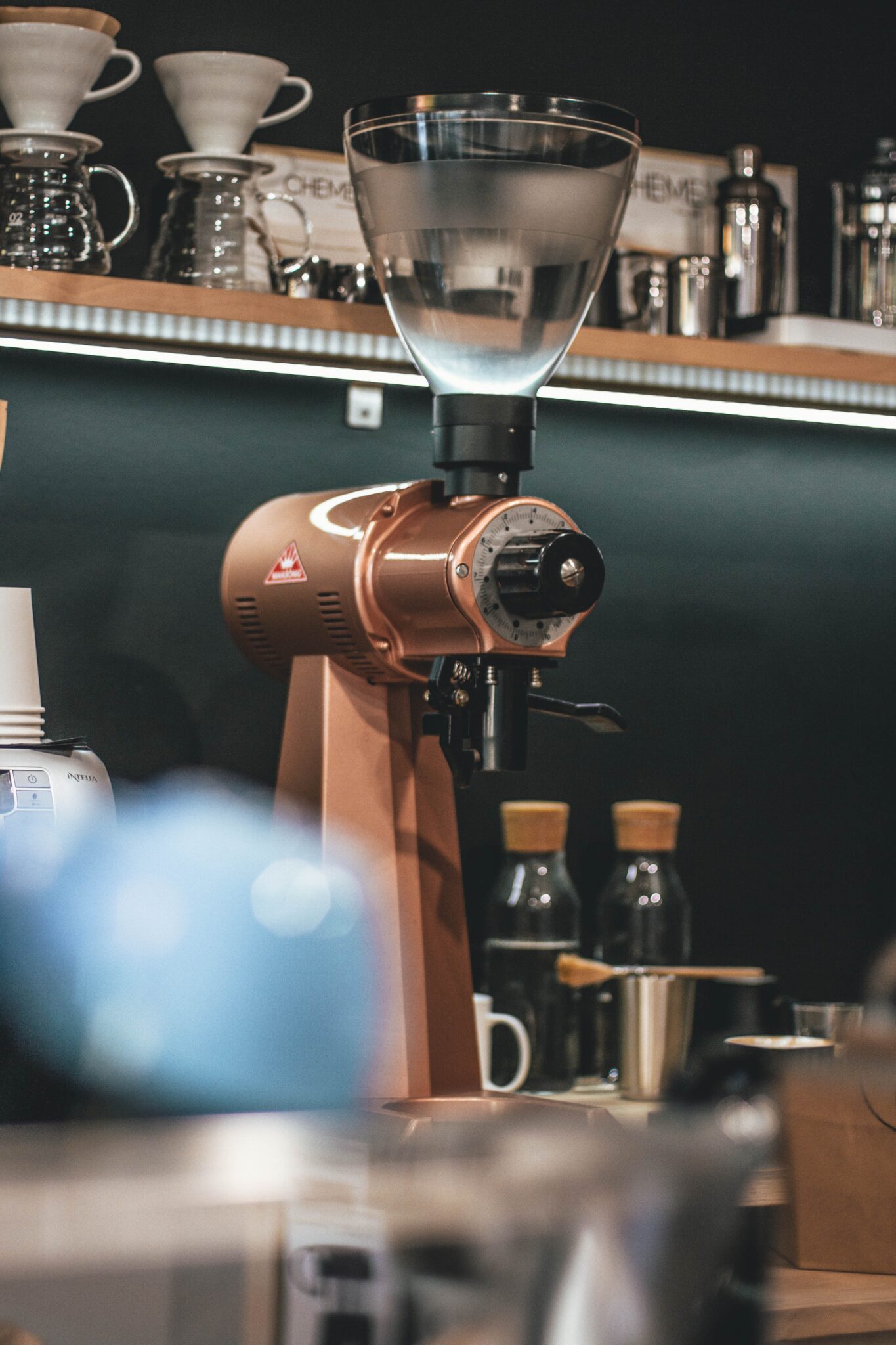
What kinds of grinder are there?
There are essentially just two kinds of coffee grinder: blade grinders and burr grinders. Blade grinders, like the ones you use to grind herbs, work, as the name suggests, by having a rapidly rotating blade which chops things (in this case coffee beans) into small pieces. Burr grinders use two grinding surfaces (the burrs), one of which is static and the other rotating, between which the coffee beans are ground. Burr grinders break down further into two types: conical and flat. Conical burr grinders, which have two cone shaped burrs nestled together vertically, and flat burr grinders, which have two flat burrs facing each other. Not all burr grinders are the same, and old-style paddle grinders are still found in all industries. Continue reading -> The Problems with Paddle Coffee Grinders.
One of the most important elements of making reliable, quality coffee is having a consistent grind. The size of the ground bean particles is of paramount importance to getting an extraction just right, and this means that the grind size must be consistent. By this measure the burr grinder is by far the most successful variety of coffee grinder and though the flat grinder is the most consistent of the two, burr grinders have traditionally been the favourite of speciality coffee world. For this reason, in this blog I’ll be concentrating on burr grinders rather than blade grinders.
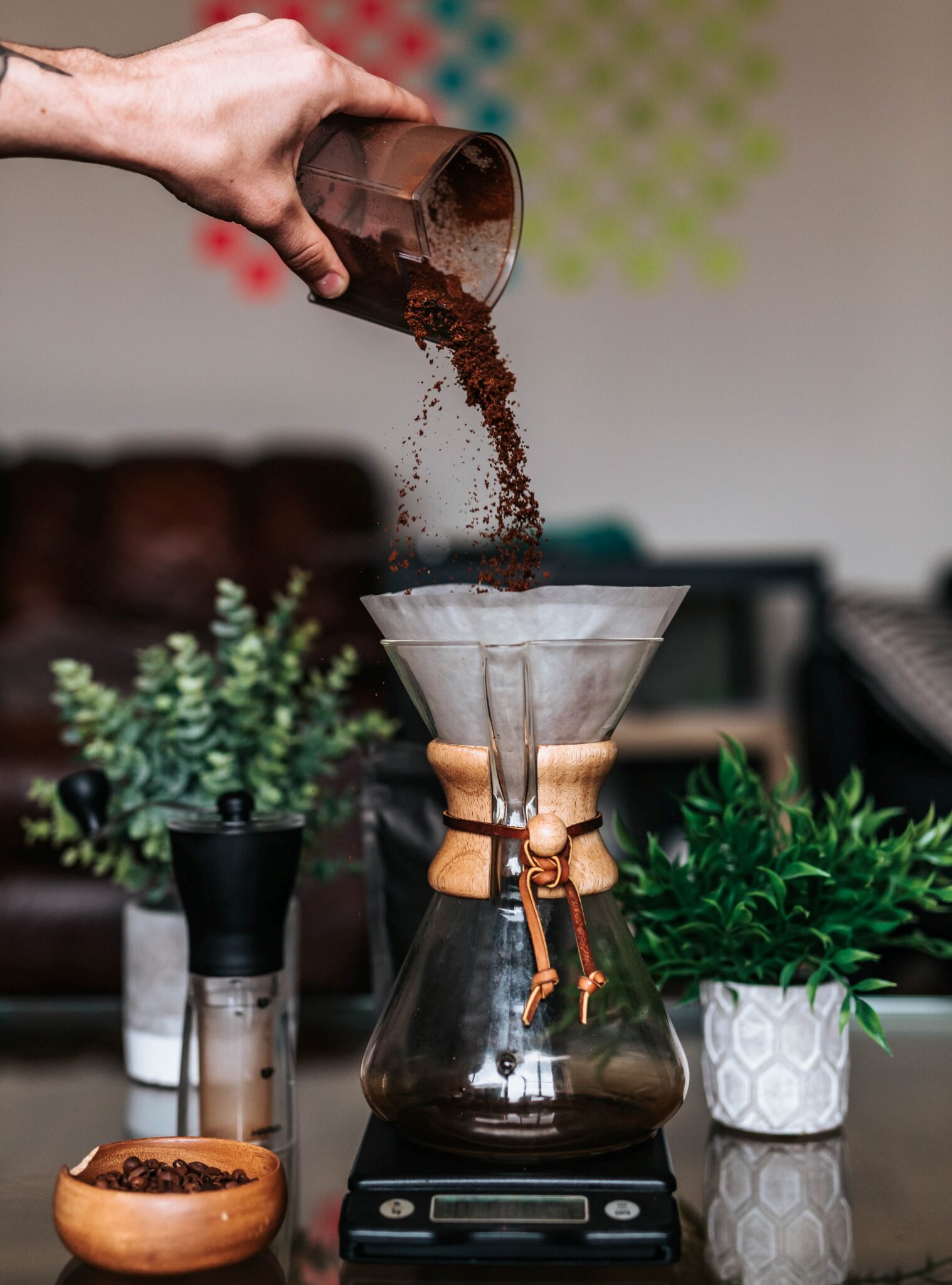
Setting up your coffee grinder
We’ve already clarified that we are looking at burr grinders but I also want to establish that here I am talking about grinding for espresso. If you are grinding for a cafetiere or drip filter, the tolerances for less precise grinds are much wider, whereas the espresso method of extraction is much less forgiving and needs a closer focus on the precision of the grind which you are using.
Remember that with an espresso extraction, heated water is forced under pressure through the grinds. If the grinds are too large the water is pushed through too quickly and the coffee produced will be under-extracted and lacking in flavour. On the other hand, if the grounds are too fine they can become completely waterlogged and whatever coffee is dispensed into the cup will have spent too long in the grounds and will be over-extracted. So, the goal is to produce a size of grind which is just right.
Try and try again
When you are setting up your grinder, start off with a setting slightly above the finest, as espresso is usually a very fine grind and this should start you off somewhere in the vicinity of where you want to be.
Then you grind your first dose and extract a shot from it. At this point you are looking at three variables: the length of time of the shot, the wet dose which it produces and, of course, how it tastes. You are probably looking at somewhere around 25 – 30 seconds for a double shot, do remember that the pressure in your espresso machine is also a feature here, but there should be a standard pressure bracket for the machine you are using. With the wet dose, you are considering the amount of coffee produced relative the quantity of grind used which is an indicator of how much water has soaked into the grinds, which is determined chiefly by its fineness, or coarseness.
If your double shot only takes 15 seconds you know that on your next adjustment you need your grinds much finer. Alternatively, you would need it much coarser if the extraction took 40 seconds and barely dripped any coffee into your cup rather than producing that steady, warm-honey flow.
You then repeat this process, making tiny alterations, until you have found just the right grind to produce the best coffee possible from your beans. After you complete this whole procedure for the first time you will have a rough idea of where your grinder needs to be set in the future, however you should go through a similar process with any new beans you have as each will have its own perfect setting, even if it is the same bean from the same supplier as you previously used.
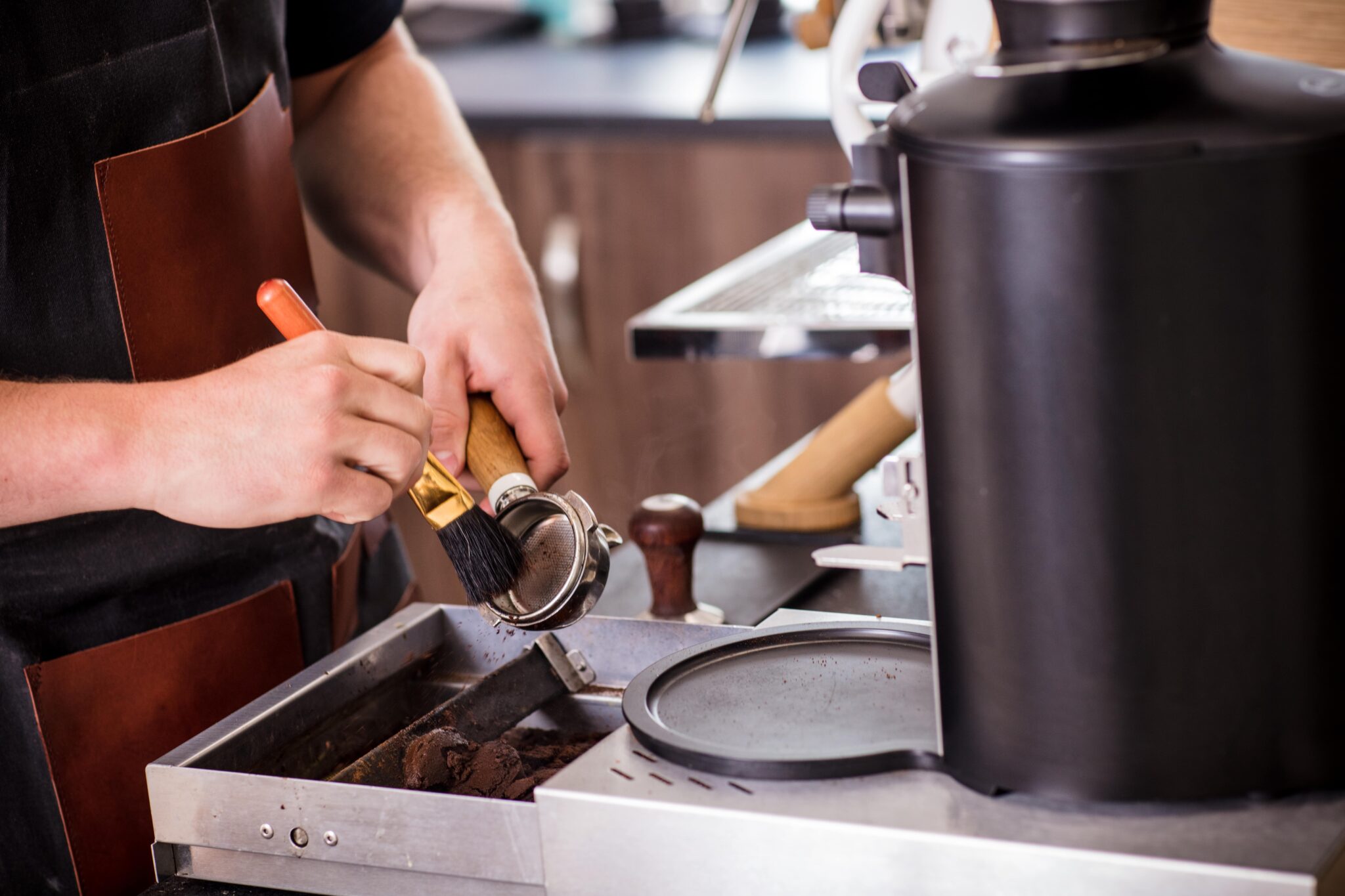
And again…
In fact you may need to go through all this even more regularly to take into account a number of factors, for example the ambient temperature – the grind may well be different in the warm afternoon compared to on the cold morning which preceded it. Other important factors include the volume of coffee you are grinding and the temperature of the grinder itself, and of the espresso machine. Certainly, in a commercial setting regular dial-ins throughout the day are advisable.
Maintaining your grinder
Like any other piece of specialist equipment, your grinder needs to be carefully cleaned and maintained. Without this, the quality of your coffee will deteriorate, and the condition and lifespan of the grinder will suffer.
If you are familiar with speciality coffee, you will be well aware that it can be a messy, dusty and greasy substance. Dust and grease are not friends of machinery and it is advisable to regularly clean and maintain your grinder
Can we kick-off though, with a couple of rules, one hard and fast and the other not so set in stone, but strongly suggested? First: never have your fingers anywhere near a grinder which is plugged in! If you are doing anything with a grinder other than grinding coffee, please make sure it is unplugged. Secondly: resist the urge to clean your grinder with rice. Yes, we know that some people do it and it does not guarantee disaster, but rice can be much harder than coffee beans, which as result can damage the burrs and strain the motor, rice also produces its own byproducts, such as starch, which you don’t want in your grinder.
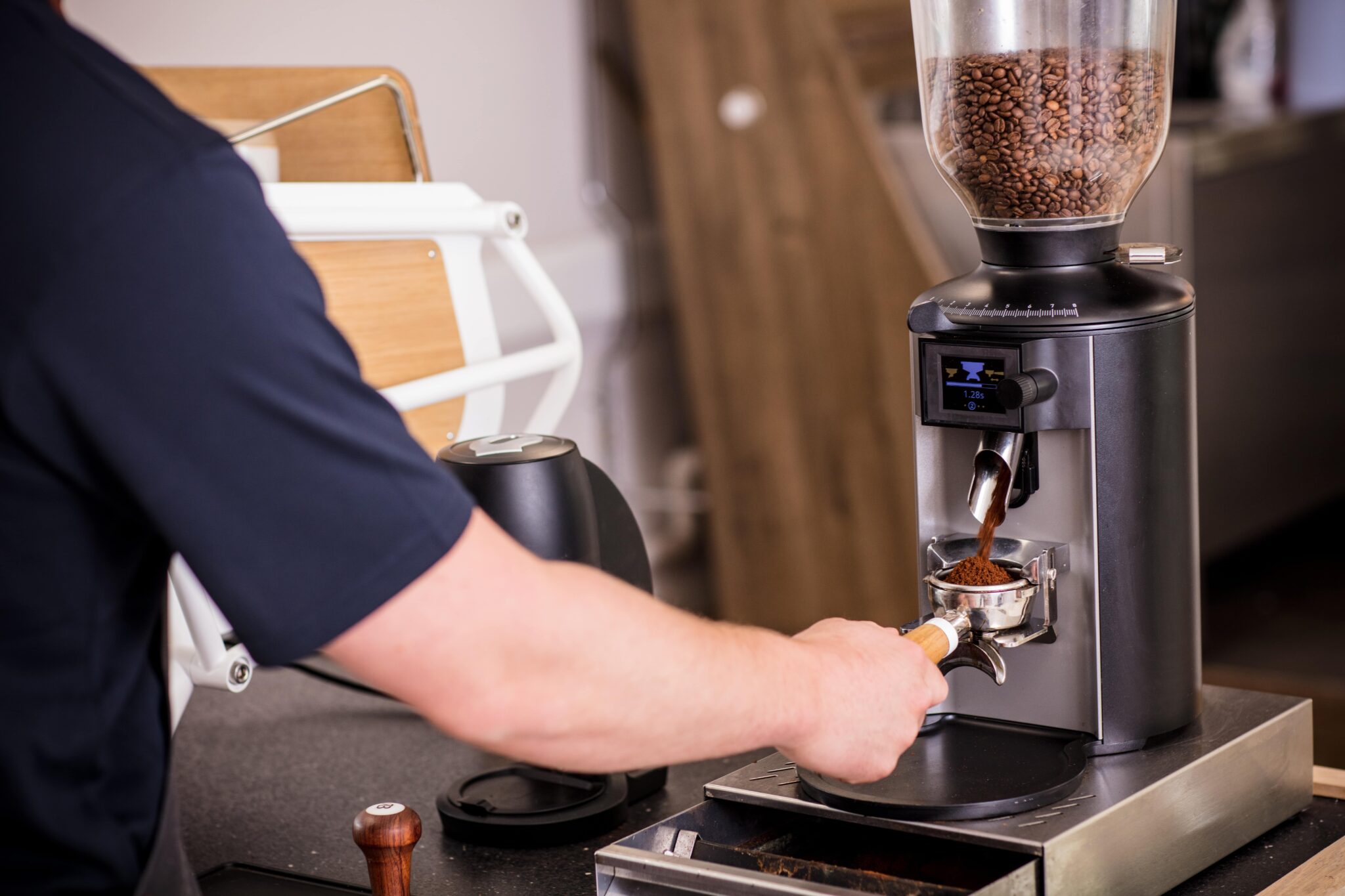
Frequent light cleaning
Depending on your level of business, in a commercial setting your regular clean for your grinder is probably going to be a daily event, or at the very least, every other day. All this requires is a removing the hopper, wiping it down, brushing away any obvious detritus from around the burrs and running a measure of grinder cleaning pellets. Afterwards, it is good practice to grind some beans and throw them away just to make sure there are no remnants left of the cleaning pellets and to lightly re-season the burrs, as ironically enough, a little of the oils from the beans in the mechanism is a good thing.
Regular deep cleaning
You will also need to undertake a regular deeper clean. A deeper clean is a more thorough and much more satisfying experience. With the grinder clearly unplugged remove the hopper and clean it with a lint free cloth, if it seems especially greasy you can wash it in hot water and even some soap, just as long as it is well diluted and you rinse it off quickly. Make sure it is absolutely dry before you use it again. This is a very good rule of thumb throughout as you do not want to introduce moisture into the grinder: so if you get anything wet during the cleaning, make sure that it is bone dry when you have finished with it.
With a small brush clean all the dust and bits of bean from all the surfaces, screws, and nooks and crannies. Remove the accessible, upper burr (putting any of the screws somewhere very safe!), revealing both itself and the second burr for cleaning, for which you can use a lint free cloth again or a small brush making sure that you also pay attention to the coffee chute. Throughout this cleaning you may find a pressurized can of air and a hand-held vacuum cleaner useful as well.
Once you have reassembled your grinder (check you haven’t left any screws behind) you should once again run some coffee beans through again just to clear out any contaminants you may have left behind and to re-season the burrs.
Don’t get worn down
A grinder does a lot of heavy work and eventually this takes its toll. If you discover that you are having real difficulty producing good coffee and the consistency of your grind seems to have gone then you need to check whether your burrs are worn. Eventually burrs need to be replaced and it worth keeping this in mind and checking that your grinder is working at its best.
Your grinder is a very important piece of equipment and with just a little care and regular attention it can help contribute to every beautiful cup of coffee you produce, so don’t forget this unsung hero.
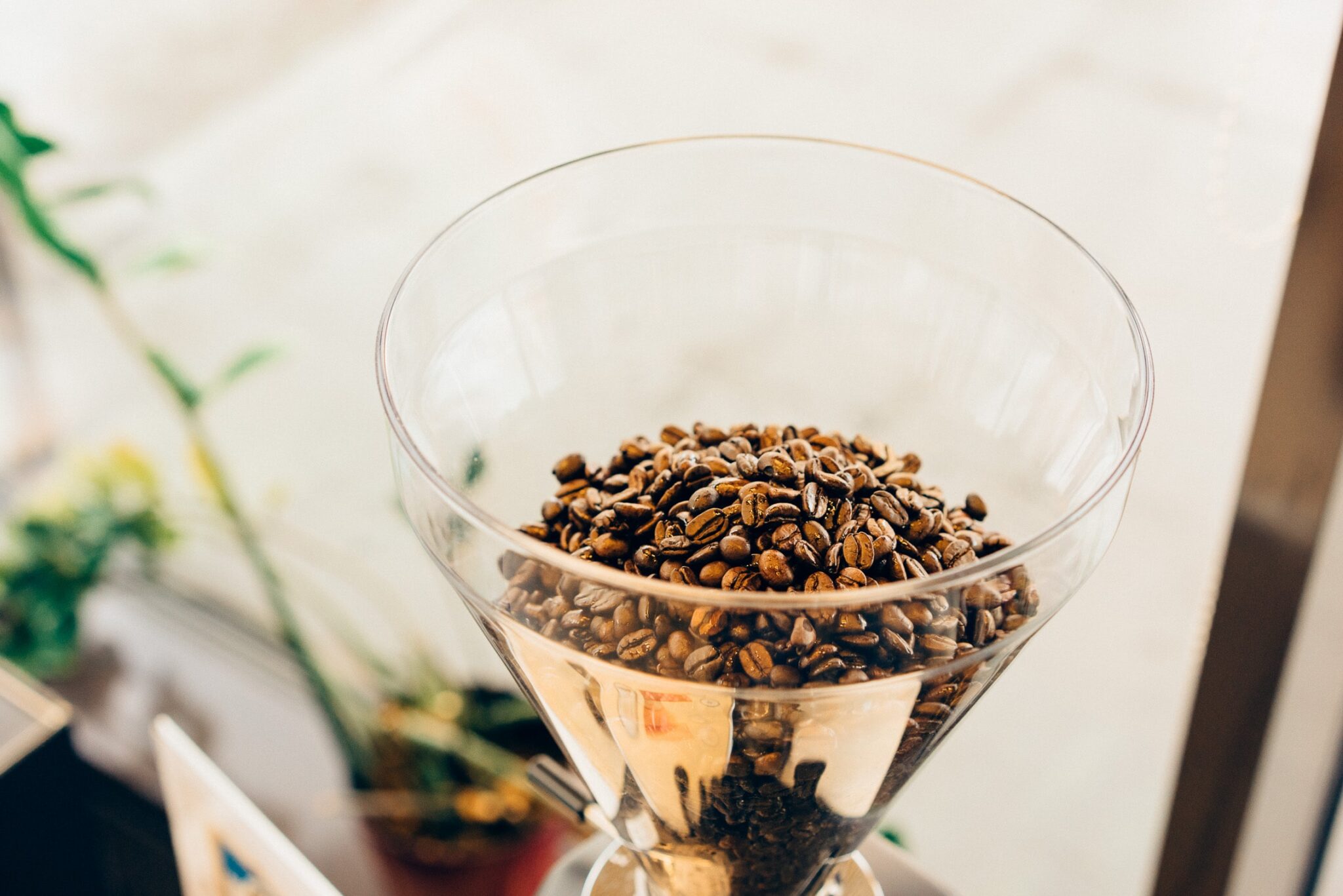
Grinders
Like to know more about what Grinders and other machinery we can offer? Head to our machinery page for more details, or, get in touch with our team to discuss the solution for you.
View the range

